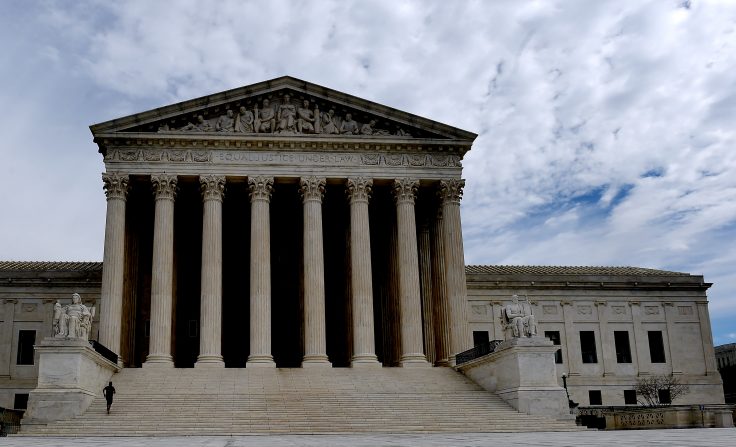The Supreme Court will hear arguments by teleconference for the first time in its history in response to the coronavirus pandemic. It announced Monday that it set 13 cases for hearings in May, including a dispute over whether President Donald Trump should be forced to turn over his financial records to Congress.
Monday's unprecedented development came after the pandemic forced the justices to cancel their March and April argument sessions, leaving the outcome of 20 cases in doubt. Among those disputes are time-sensitive matters such as the Trump subpoenas and the constitutionality of state laws that punish so-called faithless presidential electors.
"In keeping with public health guidance in response to COVID-19, the justices and counsel will all participate remotely," the Court's statement reads. "The Court anticipates providing a live audio feed of these arguments to news media. Details will be shared as they become available."
The teleconference will not include a camera component. Though logistics have not been finalized, it's possible that the press will be able to broadcast the arguments to the public.
Though a live audio broadcast would be a major development for the Supreme Court, it is not surprising that the justices chose to resolve certain cases before summer. Cases involving legal process and the presidency in particular are often resolved quickly, sometimes outside the ordinary course. In 1974, the Supreme Court held an unprecedented July hearing to review a subpoena for President Richard Nixon's infamous Watergate tapes, producing an opinion just three weeks later.
Arguments will run from Monday May 4 to Wednesday May 13. Aside from the three subpoena disputes and the faithless elector cases, the justices will also consider the scope of an exemption from an employment nondiscrimination law, a challenge to the Trump administration's rules exempting religious dissenters from the Affordable Care Act's contraception mandate, and a long-running dispute from Oklahoma asking whether an Indian reservation covering a huge portion of the state was validly disestablished.
Logistics might prove challenging for the justices, who ask dozens of questions during the typical 60-minute argument. An ordinary oral argument is replete with interruptions, and despite earnest attempts at courtesy, the justices sometimes talk over one another. Though Chief Justice John Roberts occasionally establishes a queue, a free-wheeling approach to questioning lawyers is the norm.
The Court did not formally announce how it will dispose of the remaining March and April cases, but a lawyer in one dispute said he has been told his argument will be deferred to the Court's next term, which begins in October.
Left unclear after Monday's announcement is when the Court's current term might end. The justices usually hear arguments from October to April, then adjourn at the end of June for a summer hiatus. The justices will likely need additional time to process cases from the May sitting, meaning the Court will probably produce opinions through July.
The Court has consistently resisted entreaties to broadcast its arguments for the public. Many were quick to say that the justices should maintain the practice after the pandemic subsides. Just 50 seats are available for members of the public who wish to observe oral arguments. Lines form days in advance of hearings in major cases. Visitors bring lawn chairs and sleeping bags to bide their time.
"This is unprecedented and a tremendous step in improving the transparency of the Supreme Court," said Anthony Marcum of the R Street Institute. "After this current health crisis is over, there is little reason why the Court should not continue this practice."
The justices have continued much of the Court's work in spite of the coronavirus pandemic. The Court has taken up emergency appeals involving abortion and voting rights, met in private teleconferences to discuss pending appeals, and handed down opinions remotely in recent weeks.
